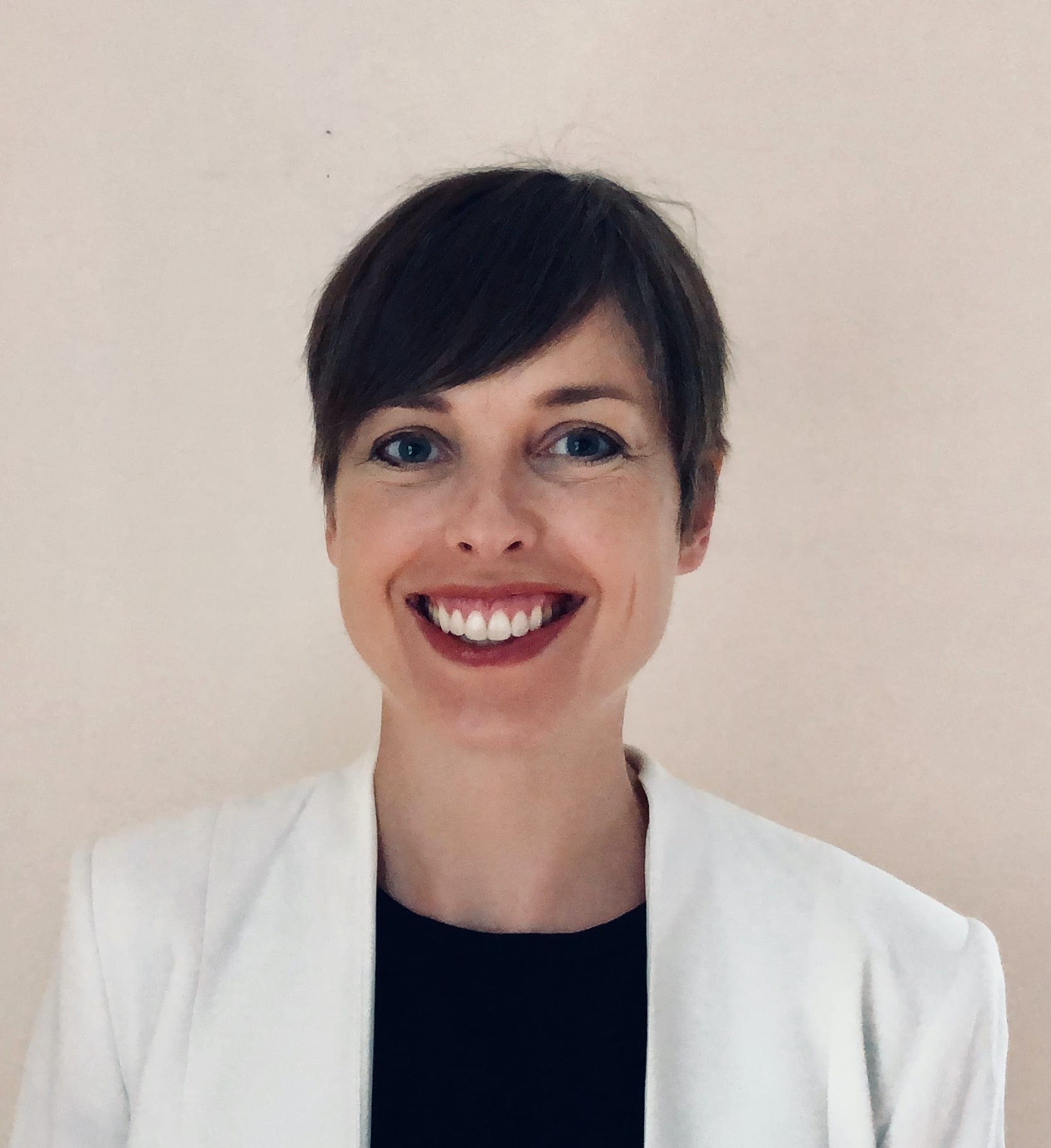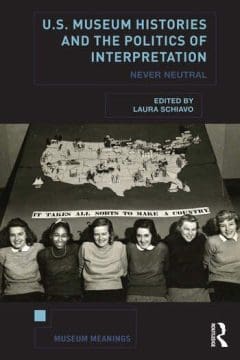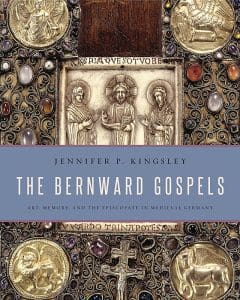
Jennifer Kingsley
Teaching Professor and Director, Museums and Society
Contact Information
- [email protected]
- Gilman 389
- Thursday, 12:30-2:30 p.m.
Research Interests: Medieval art; history of collecting and display; art museums; inclusive museums; history of the senses; digital knowledgescapes
Education: PhD, Johns Hopkins University (History of Art)
Jennifer Kingsley is Teaching Professor in the Program in Museums and Society, affiliate faculty in the Department of the History of Art, and Director of the Program in Museums and Society.
Dr. Kingsley joined the program in 2011, where she has grown a dynamic and interdisciplinary curriculum that emphasizes applied learning and publicly engaged research in collaboration with Baltimore’s cultural and historical institutions, fostering meaningful connections between academic research and broader cultural conversations. She has stewarded more than thirty distinct projects for public audiences in collaboration with undergraduate students and community partners. She leads the strategic partnership between the program and the Baltimore Museum of Art and works closely with JHU's Homewood and Evergreen Museums.
Dr. Kingsley’s research spans early medieval art and its reception in modern museum contexts, American museology, and community-engaged teaching and learning.
Her first book The Bernward Gospels: Art, Memory and the Episcopate in Medieval Germany (Pennsylvania State University Press, 2014) is a comprehensive study of one of the most significant examples of the 11th-century book arts, an illustrated gospel book that served as a founding gift from Bishop Bernward of Hildesheim to the Abbey of St. Michael’s. A prominent representative of a new class of wealthy and powerful donors—the well-connected bishops of Ottonian Germany, Bernward commissioned artworks of extraordinary quality, and in a wide range of media. The densely meaningful paintings of his book sought to build a special relationship with God and to condition how contemporary and future viewers remembered the bishop. In doing so, the manuscript’s paintings afford broader insight into the nature of medieval images, mechanisms of memory, contemporary struggles with the evolving social roles of bishops in the period, and ideas about the senses and spiritual perception around the millennium.
In the realm of museum history and museology, Dr. Kingsley’s work has emphasized modern American trends and practices, with a particular focus on Baltimore. She has written about the 2018 restaging of the Baltimore Museum of Art's 1939 exhibition "Contemporary Negro Art" and the efforts of Black women to integrate the collections, programs and exhibitions of the Baltimore Museum of Art during the Jim Crow Era. Her book project, By Their Creative Force: Baltimore Women and the Making of Culture in Modern America examines the cultural lives of fourteen Baltimore women of diverse backgrounds, generations, and cultural roles, who participated in and shaped America’s emerging art world during a period of profound upheaval and transformation, from the Progressive Era to the decade following World War II.
Dr. Kingsley is presently co-editing Advocating for Art History (Mount Vernon Press), a volume that addresses pressing issues for the discipline’s status in higher education. Beyond academic contributions, Dr. Kingsley is committed to public scholarship, having led over a dozen collaborative curatorial projects with students.
Courses Taught
- Introduction to the Museum: Past and Present
- Inventing the Middle Ages
- World of Things
- Collections Remix: Black at Hopkins
- Black Artists in American Museums: Correcting the Canon
- Art in the Museum
- Curatorial Seminar
- Object Encounters at the Baltimore Museum of Art
- First Year Seminar: Curating Women | FYS: Museum Matters
- Interpreting Hopkins as Historic Site
- Of and For Everyone: Diversity, Equity, Inclusion and Access in the Museum
- Museum Education for Today's Audiences
- Greening Museums
- Graduate reading courses/fields in museum history, conservation history, and on medical museums
Supervised Student Projects:
- Cherchez la Femme: Quatres Femmes de Baltimore et l’Heritage d’Henri Matisse (French thesis, co-advising with Elena Russo)
- Both Sides Now: The Spirituality, Resilience, and Innovation of Elizabeth Talford Scott, part of No Stone Left Unturned: The Elizabeth Talford Scott Community Initiative (JHU site exhibit at George Peabody Library)
- Contemporary Chinese Art and Its Institutions (Woodrow Wilson fellowship project, 1 year only, student never completed project)
- History of Homewood and Its Surrounding Areas (research for Homewood Museum initiated curatorial project)
- Degraded Collagen in Parchment (capstone, co-advising with Patty McGuiggan)
- Museums & College Audiences (Visitor Studies research for Evergreen Museum)
- Public Understanding of Conservation / Public Understanding of Archaeology (Youtube videos for JHU Archaeology Museum)
- Art Museum Accessibility for Adults with Disabilities (white paper, presented at national conference on disability)
- Human versus Infinity (artist book project, supported by Arts Innovation grant)
- Eradicating Tuberculosis: A Medical and Cultural History (installation at the Institute for the History of Medicine, in-kind support from the Institute)
- Morbid Obsessions: Exploring the Ambivalence of Death in Medical Museums in 20th and 21st century United States (Woodrow Wilson fellowship project)
- Present at Peabody (site-specific contemporary art exhibit, supported by Mellon Arts Innovation Grant)
- Rethinking Gulf Museology (Woodrow Wilson fellowship project)
- The Missing History of the Hopkins National Pan-Hellenic Council (oral history and archiving project focused on black Greek life)
- African Cemetery Trail at Catoctin Furnace (interpretive plan for a 6-stop heritage trail, funded by Museum of the Ironworker)
- Black Education in Baltimore (installation in exhibition Enslaved at Homewood, Homewood Museum, in-kind support from Homewood Museum)
- Curse of Dimensionality (interpretation for HEMI/MICA Extreme Arts installation at JHU, funded by HEMI/MICA Extreme Arts)
- Homewood Stories & Archaeology of Knowledge (audio tours, Museums and the Web grant)
- Conversations with the Carrolls (Museum theater performance at Homewood Museum, Mellon Arts Innovation Grant)
- Motifs in Jewish Art (focus installation at Smokler Center)
- To Glorify and To Sanctify: The Crown in Jewish Art (focus installation at Smokler Center)
Books
-
- Author, By Their Creative Force: Women and the Making of Culture in Modernizing Baltimore (in process)
- Co-editor with Cynthia Persinger and Rose Trentinella, Advocating for Art History (Vernon Press. Manuscript due April 15, 2025)
- The Bernward Gospels: Art, Memory and the Episcopate in Medieval Germany (University Park: Penn State Press, 2014).
- Supported by competitive Medieval Academy book subvention and International Center for Medieval Art Samuel H. Kress Research Award.
- Reviewed by Eric Palazzo, Cahiers de Civilisation Médiévale (Oct 2017): 422-424; Lisabeth C. Buchelt, Religion and the Arts 3 (2017): 419-422; Karen Blough, Caa.Reviews (March 8, 2017).
Peer-reviewed articles and chapters
-
-
- “Black Activism and the Museum in the Interwar Period: A Baltimore Case Study” S. Museums and the Politics of Interpretation: Never Neutral. Edited by Laura Schiavo, 165-185. Museum Meanings. London: Routledge Press, 2023.
- “The Canon as Provocation: Partnering with Museums for the Future of Art History Teaching” Art History Pedagogy & Practice 4 (September 2019) https://academicworks.cuny.edu/ahpp/vol4/iss1/3/
- “The Practicum Course Model: Embracing the University-Museum Culture Clash.” Journal of Museum Education4 (2016): 250-261.
- “Picturing the Treasury in Ottonian Art: The Power of Objects and the Art of Memory in the Bernward Gospels.” Gesta 1 (2012): 19-39
- “To Touch the Image: Embodying Christ in the Bernward Gospels.” Peregrinations 1 (2010): 138-73
- “Ornament, Style and Interpreting the Medieval Oliphant at the Walters: A Reconsideration.” A New Look at Old Things? [= Journal of the Walters Art Museum 68/69] (2010/2011): 87-98.
-
Chapters in Edited Volumes
- “Collections Data: African-American Artists and the American Art Museum” Handbook of American Material Culture Studies (Routledge Press, accepted)
- “The Reflexive Riff: Revisiting Contemporary Negro Art at the Baltimore Museum of Art.” With Morgan Dowty and Gamynne Guillotte. Reconstructing Exhibitions in Art Institutions. Ed. Natasha Amadou and Michaela Giebelhausen, 72-94. London: Routledge Press, 2023.
- “Le paysage sensoriel de l'église et les images vers 1200: le témoignage du Mitralis de Sicard de Crémone.” In Les cinq sens au Moyen Âge. Edited by Eric Palazzo, 669-690. Paris: Éditions du Cerf, 2016.
- “Bishop and Monk: John the Baptist in the Episcopal Image of Anglo-Saxon England and Ottonian Germany.” Envisioning the Medieval Bishop, Edited by Evan Gatti and Sigrid Danielson, 215-248. Medieval Church Studies, 29. Turnhout: Brepols, 2014.
- “VT CERNIS and The Materiality of Bernwardian Art.” In 1000 Jahre St. Michael in Hildesheim: Kirche-Kloster-Stifter, Internationales Symposium des Hornemann Instituts, September 16-18, 2010. Edited by Gerhard Lutz and Angela Weyer, 171-84. Hildesheim: Michael Imhof, 2012.
Public dissemination
- With Kevin Tervala, “A Medievalist Stumbles into an Africanist” College Art Association Conversations Podcast. December 6, 2019. https://www.collegeart.org/news/category/podcast/
- "Social Justice and Collections Based Teaching" Blog Post at Material Collective. January 2019. http://thematerialcollective.org/3101-2/
- “A Low-Tech Approach to Digital Literacy.” Pedagogy Series. JHU Innovative Instructor. July 2016.
Reviews
- “Collecting the World: Hans Sloane and the Origins of the British Museum” Book review. History: Reviews of New Books 5 (September 2018)
- “A Feast for the Senses: Art and Experience in Medieval Art at the Walters Art Museum.” Exhibition review. reviews: A Publication of the College Art Association of America. December 2017. http://caareviews.org/reviews/3167#.WlkX5iOZNBw

Reconstructing Exhibitions in Art Institutions
- contributor
- Routledge , 2023

U.S. Museum Histories and the Politics of Interpretation: Never Neutral
- contributor
- Routledge , 2023

The Bernward Gospels: Art, Memory, and the Episcopate in Medieval Germany
- author
- Penn State University Press , 2014
Select Museum Projects:
Antioch Court Reinstallation, Baltimore Museum of Art, Phase 1 in 2022 & Phase 2 in 2024 (permanent collection display co-curated with Kevin Tervala)
Postcard Journeys, 2023 (interpretive postcard deck for self-guided visits, for Baltimore Museum of Art special exhibitionMaking Her Mark: A History of Women Artists in Europe 1400-1800, with contributions from JHU students)
American Modernism Reinstallation, Baltimore Museum of Art, 2022 (consulting work for permanent collection display, with contributions from JHU students)
A Perfect Power: Motherhood and African Art, Baltimore Museum of Art, 2020 (special exhibition co-curated with Kevin Tervala and Professor Oyeronke Oyewumi of Stony Brook University, with contributions from JHU students)
Housing Our Story: Towards Archival Justice for Black Baltimore, 2017-2019 (archive, oral history & pedagogical project focused on black staff at JHU. Co-I with Nathan Connolly, History, and Shani Mott, Africana Studies)
Black Artists in the Museum, Fall 2018 (website, with contributions from JHU students)
1939, Baltimore Museum of Art, Fall 2018 (microsite accompanying Baltimore Museum of Art exhibition 1939: Black Art at the BMA)
American Selfie. Sheridan Libraries, Johns Hopkins Univeristy, Winter 2017 (temporary exhibition, co-curated with JHU students)
Joyce Scott’s Ancestry Doll 1. Gilman Hall, Johns Hopkins University, Winter 2017 (permanent installation, co-curated with JHU students in consultation with artist)
The Material Culture of Academic Life, Johns Hopkins University, Winter 2014 (online exhibition, co-curated with JHU students)
JHU Collections Web, Summer 2014 (online collections presentation and pedagogical tool website, with technical support from JHU Center for Teaching Excellence)
A Sense of Place, Johns Hopkins University, Fall 2014 (10 wayside exhibits, co-developed with Homewood Museum, Elizabeth Maloney, and JHU students)